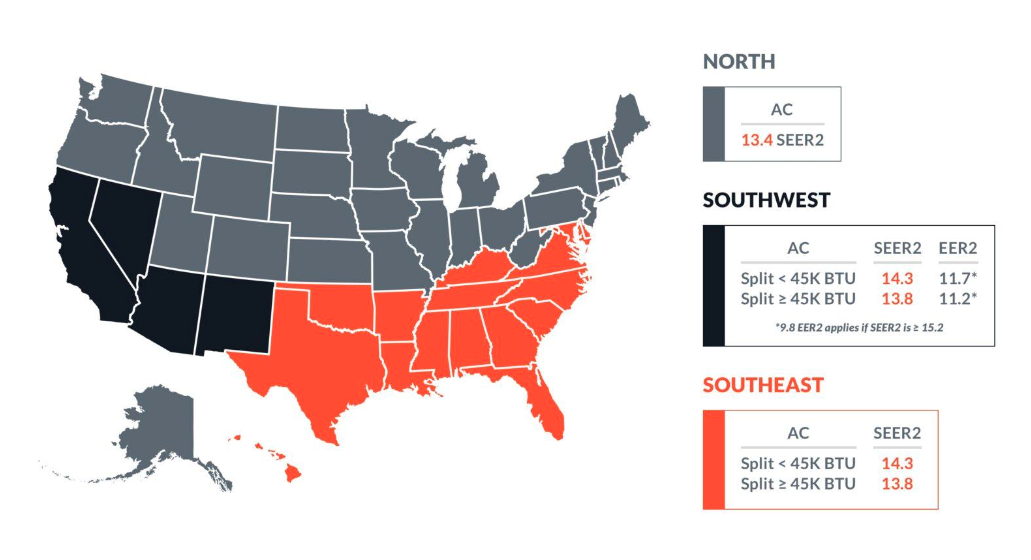On January 1, 2023, the Department of Energy (DOE) implemented new HVAC energy efficiency standards that affect most HVAC equipment. What is this new standard? How will this affect consumers? Continue reading to learn more.
New 2023 HVAC Energy Efficiency Standards
What Is Changing?
One of the major changes that the 2023 HVAC energy efficiency standards will introduce is the increase of SEER (Seasonal Energy Efficiency Rating). Now air conditioning and heat pumps need an increased SEER by 8 – 10%. The new standard will also require a new SEER2 rating. Meaning air conditioners will be required to have a minimum efficiency ratio of 14, increasing from the last minimum rating of 13.
What does this mean for current HVAC equipment? With this new standard, around 70% of all HVAC equipment will need to be reevaluated or replaced to meet the requirement. Therefore, manufacturers must redesign and retest the system’s components to meet the new standard.
Why Is The DOE Changing HVAC Energy Efficiency Standards?
The main drive for the new changes is to promote a more sustainable future and lessen the number of emissions being put out by refrigerants. To prevent this the DOE is highering the scale. The higher the number of SEER, the more energy-efficient a system is.
By requiring HVAC systems such as air conditioners and heat pumps to operate at a minimum efficiency ratio, the government hopes to encourage the use of environmentally-friendly HVAC systems, reduce greenhouse gas emissions, and lower energy bills for homeowners.
How Is This Impacting Different Regions Of The Country
It’s important to note that the 2023 minimum efficiency standard is being implemented differently in the U.S. For example, heat pumps are undergoing a nationwide efficiency increase, while air conditioners are set regionally.
This means all heat pumps in the country will have to meet the same minimum efficiency ratio, regardless of the region. On the contrary, the SEER for air conditioners is set depending on the area. So, for example, in a warmer region, such as the south and southwest, the minimum efficiency ratio for air conditioners will be higher than in cooler regions.
For more details about the territory-based guidelines, check out the SEER2 official site.
The Benefits Of This Change For Consumers
While the new changes will increase the price of HVAC equipment (around 15% – 20%), the new standard will also bring several benefits for consumers.
First, by increasing the minimum efficiency ratio, the system will work more energy-efficiently. The equipment will consume less energy and therefore cost less to run. This means you’ll see a decrease in your energy bills, and you’ll be able to save more money in the long run.
Second, the new standard will help reduce the amount of emissions being emitted into the atmosphere, benefiting the environment and public health.
Lastly, these new standards will drive innovation, further improving the performance and quality of HVAC equipment. As a result, consumers will have more HVAC options that are good for the environment and the wallet.

Get Your Electrical Heat Pump From Johnson’s Today!
The new standard will bring more cost-effective heating and cooling equipment to the market. We at Johnson’s always ensure that our products are of the highest quality and compliant with new regulations so that our customers are worry-free when purchasing HVAC equipment.
Please contact us for more detail, and we look forward to welcoming you soon.



Recent Comments